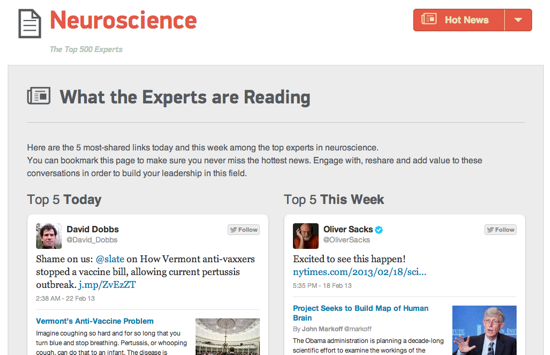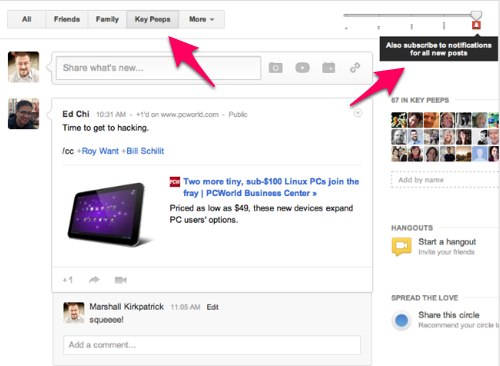I need to go walk my dog. I could listen to music, to a podcast or to my own fabulously fascinating thoughts – but I’m not going to. I’m going to have a robot neuroscientist make the whole experience a time to learn.
Ok, what I’m actually going to do is use two robots (or automated technologies) to do the following: find me the hottest article of the week among the world’s leading neuroscientists online and then read it outloud on my phone while I walk the dog.
Here’s how I did it:
First I visited the Hot News page in a Little Bird report I ran awhile ago on Neuroscience. On that page, I find the 5 links that are hottest among the most respected neuroscience specialists on Twitter, today and this week. It’s like Techmeme for neuroscience. (If you’re curious, it turns out that the most influential neuroscience on Twitter, in the eyes of his peers, is Mo Costandi.)

I grabbed the hottest link of the week, this one about a new federal project to fund a map of the human brain, and I emailed it to myself. I then opened the link on my phone, copied the text of the article and pasted it into this $1.99 app called Speak It! The app does a great job of reading text out loud in a robotic voice. I’ve listened to a lot of information that way while walking the dog.
And there you go, that’s how I trained a robot neuroscientist to walk my dog…kind of. The last few steps are a little hacky but it works! The first part of the hack, using a robot to find the 500 most peer-respected neuroscience specialists on Twitter and blogs, was not trivial at all, of course. That’s something we’ve now got a whole team perfecting. Even though it’s usually for serious business, late at night it can be a lot of good for fun, too.
 I’m excited to announce this morning the unveiling of the startup I co-founded, left journalism to do and have spent the last year working with my team to build. It’s called
I’m excited to announce this morning the unveiling of the startup I co-founded, left journalism to do and have spent the last year working with my team to build. It’s called 